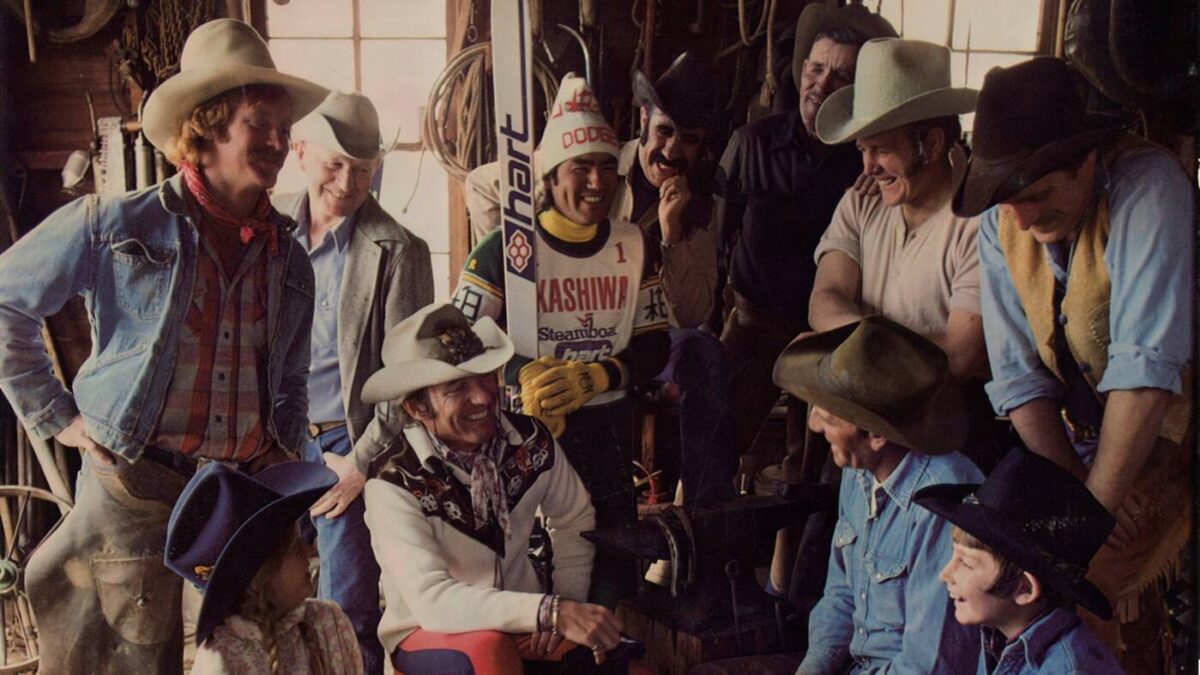Steamboat By The Decades: The ’80s
Written by Eugene Buchanan
Hoo boy, the ‘80s…when everyone was listening to Michael Jackson, Madonna, Prince, The Police and Whitney Houston on their giant-sized Sony Walkmans and sporting big hair (perms and mullets were in), neon spandex and high-waisted jeans.
Under the new ownership of Northwest Colorado Ski Corp., led by Denver Businessman Martin Hart, Steamboat kicked off the decade getting zany as well, debuting its wacky Cardboard Classic in 1980, a costumed, end-of-the-year celebration that still exists today.
Perhaps more important, however, was the resort’s first installation of snowmaking in 1981 on 160 acres serviced by nine lifts. And the timing was impeccable as it was another drought year, which would have otherwise affected operations. The addition of snowmaking helped the ski area ensure a Thanksgiving opening, which it has accomplished ever since.
Under Hart, the resort got busy with other improvements as well, removing the Summit Poma and adding the Sundown and Storm Peak triple chairs in 1983 to access Sunshine Bowl, adding 400 acres of intermediate terrain. A year later, it opened the Rendezvous Saddle mid-mountain lodge and Ragnar’s restaurant, bringing its culinary offerings on par with its ski terrain.
“Hart helped usher the ski area into a new era,” says Rod Hanna, the resort’s director of public relations and advertising at the time, who enjoyed a 20-year career with the resort. “He was the person most responsible for what Steamboat is today. He was a smart businessman and took Steamboat into the big leagues of ski resorts.”
The improvements kept coming, both in terrain and lifts, earning Steamboat recognition by everyone from corporate America to the world’s best skiers. In 1985, the Rolex run was named after two-time Olympian, resort ski school director, mountain manager, and finally vice-president of operations Loris Werner requested use of watchmaker’s name to go with the mountain’s other time-themed runs. Solidifying Steamboat’s stature in the skiing world, France’s Jean-Claude Killy even flew across the Atlantic to christen the run for its official opening. Another popular run at the resort honored perhaps an even more hardcore local skier than Killy. Rudi’s Run was named after longtime local Rudi Schnackenberg, a former 10th Mountain Division veteran who earned the Silver Star, Bronze Star and Purple Heart for his skiing and combat heroics in World War II. Inducted into the Colorado Ski Hall of Fame, he went on to supervise Steamboat’s ski school, coach for the Steamboat Springs Winter Sports Club and manage the Howelsen Hill Ski Area. The run remains one of the resort’s most popular to this day.
Of course, along with the resort’s rising popularity, steps were also made to facilitate its increasing guests. So, in 1986 the 16-year-old Stagecoach gondola was replaced with a Doppelmayr gondola, nicknamed the “Silver Bullet” and ballast-tested by beer kegs, becoming world’s first eight-person gondola. With Hart and ski area president Hans Geier flying to Austria to inspect it firsthand, it whisked passengers up to the top of Thunderhead faster than ever, cementing Steamboat’s prominence among world-class resorts. A new restaurant at the top of the gondola—Hazie’s, named after local Olympians Loris, Skeeter and Buddy’s mother Hazie Werner—also helped Steamboat’s growing reputation.
Infrastructure in place, Hart was also instrumental in working with former Routt County Commissioner Bill Haight to lengthen the runway at Yampa Valley Regional Airport, ushering in direct airline flights to Steamboat, which are still the envy of other resorts today. Making countless trips to meet with executives, Hart and marketing vice-president Kent Myers also convinced several airlines to fly here. “It was truly amazing to get that done,” says Hanna, “especially with flight guarantees. The whole decade was a great period of growth that helped us become one of the top 10 resorts in the country.”
Other milestones such as cutting the Valley View trail and allowing snowboarding for the first time in 1987 only added to Steamboat’s legacy, leading to its purchase by Japan’s Kamori Kanko Co. in 1989. The new owners made their presence and ambitions for the resort known quickly by hosting, for the first time ever, two women’s downhill and giant slalom World Cup races, which also put Steamboat in the world spotlight.
“The ‘80s were a heck of a time here,” says longtime local and Olympian Moose Barrows. “It was the decade of the New Deal and began a whole new outlook for the resort.”




